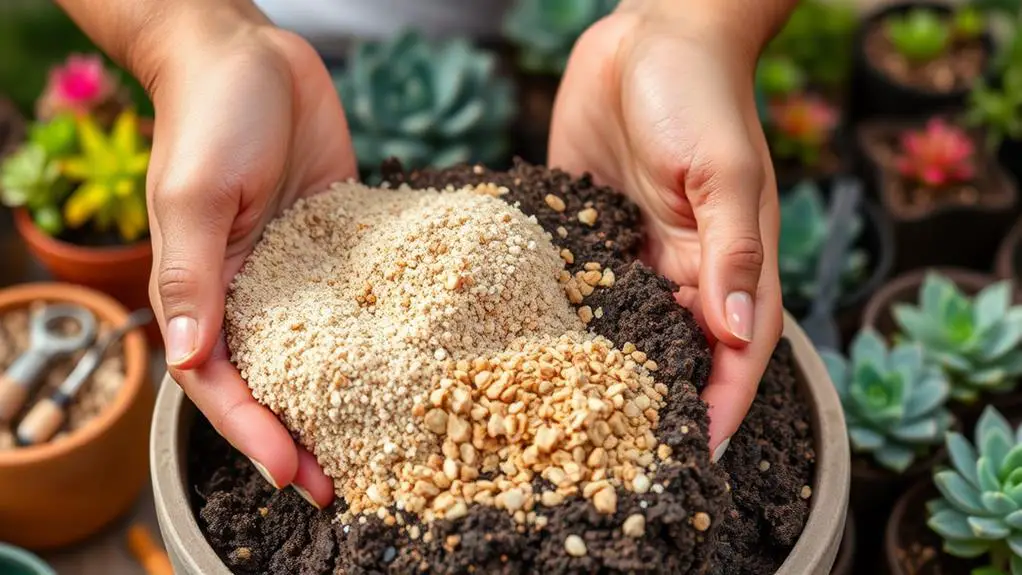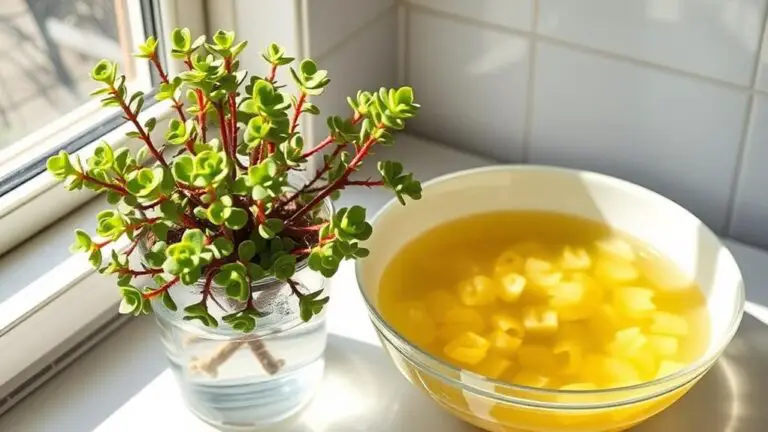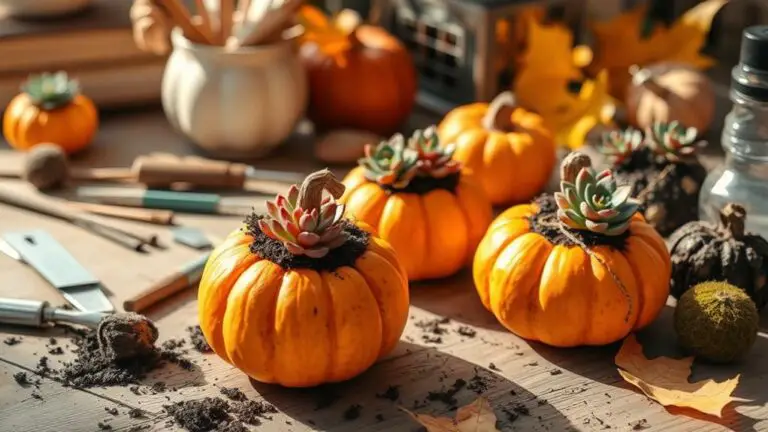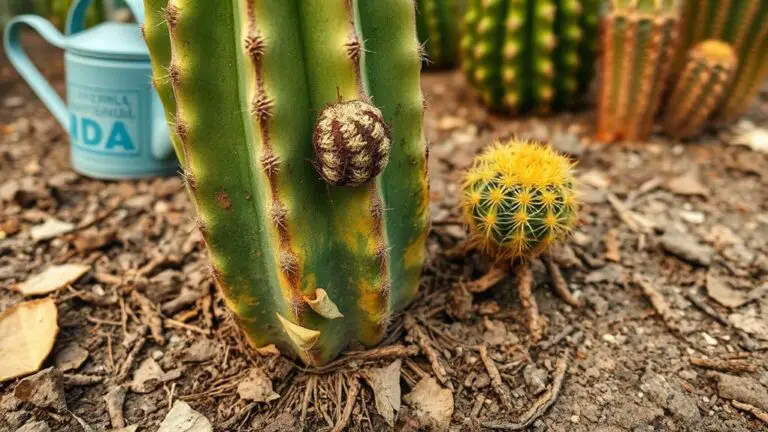Creating Well-Draining Soil for Succulent Container Gardens
When creating well-draining soil for your succulent container garden, it's essential to understand the balance between moisture retention and drainage. You might think regular potting soil will suffice, but succulents need a specific mix to thrive. Combining 3 parts potting soil, 2 parts coarse sand, and 1 part perlite can make a significant difference. This blend promotes excellent drainage and aeration, which are key to preventing root rot. However, there are a few more considerations to keep in mind to guarantee ideal conditions for your plants. Curious about what those might be?
Essential Characteristics

When it comes to creating well-draining soil for your succulent garden, understanding the essential characteristics is key. Succulents thrive in fast-draining soil that mimics their natural habitats. This means you'll need a succulent soil mix that prevents excess water from lingering around the roots, which can cause root rot.
Your soil mix should include both organic materials, like peat moss, and mineral components, such as coarse sand or gravel. Aim for a blend that promotes rapid drainage. For potted succulents, a mix containing 50%-80% coarse sand or fine gravel works best. This guarantees that water moves through the soil quickly, keeping your succulents healthy.
It's also important to choose pots with drainage holes. These allow any excess water to escape, reducing the risk of water accumulation and root issues.
Regularly monitoring moisture levels in the soil helps you adjust your watering routine, guaranteeing the soil dries out properly between waterings.
Soil Composition and Texture
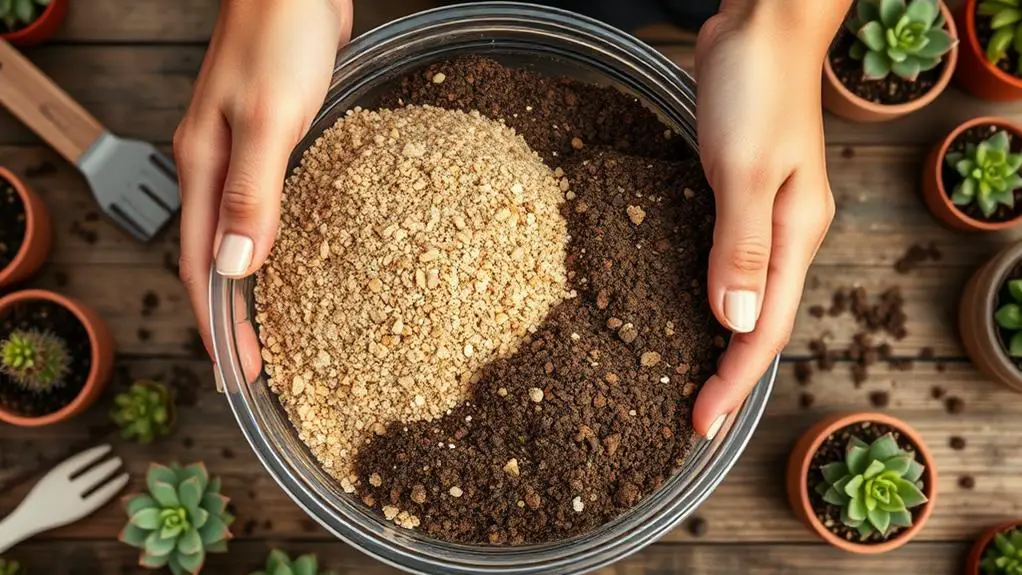
Understanding the right soil composition and texture is pivotal to creating the perfect environment for your succulent garden. For healthy succulents, your soil needs to be well-draining. This means it should consist of 40%-80% mineral content. This mix allows water to flow through it quickly, preventing root rot.
Sandy soils are great because their larger particle sizes dry out faster than clay soils. For outdoor succulent planting, aim for a sandy loam texture. This should include 50%-80% coarse sand or fine gravel, which enhances drainage. This mix guarantees that your succulents get the right amount of water without staying too wet.
For potted succulents, you'll want to use a mix of coarse grit minerals like perlite or crushed granite. These materials help with aeration and reduce moisture retention, keeping the roots healthy.
Avoid using beach sand, as it contains salts harmful to succulents. Instead, use coarse builders sand to improve soil drainage.
DIY Soil Mixes
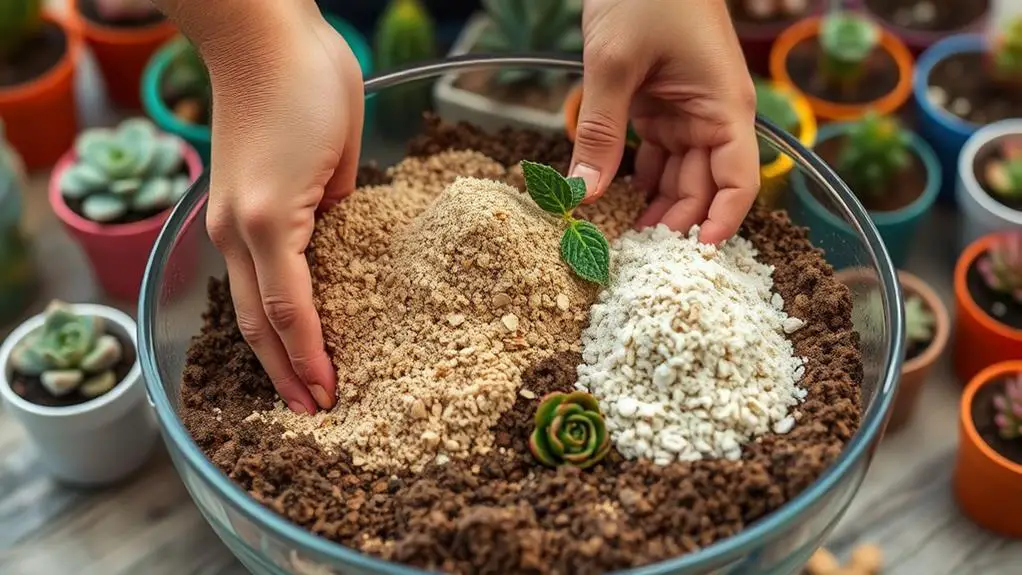
Creating your own soil mix for succulents guarantees you get the perfect balance of drainage and aeration vital for their health. A recommended DIY succulent soil mix consists of 3 parts traditional potting soil, 2 parts coarse sand, and 1 part perlite. This combination guarantees your succulents thrive in well-draining soil.
Choosing coarse sand is essential because fine sand can suffocate roots. Perlite, on the other hand, enhances lighter soil texture and drainage but may break down over time. If perlite is unavailable, you can use alternatives like rice hulls or nut hulls. These also maintain good drainage properties.
Here's a simple table to guide you:
| Ingredient | Purpose |
|---|---|
| Traditional Potting Soil | Provides nutrients and organic matter |
| Coarse Sand | Improves drainage and prevents root suffocation |
| Perlite | Enhances soil texture and drainage |
| Rice Hulls/Nut Hulls | Alternative to perlite for drainage |
Mix all ingredients thoroughly in a large container to avoid clumps that could hinder drainage. Store any excess DIY succulent soil mix in a sealed bag or container to keep it dry and effective. By following these steps, your succulent container gardens will flourish with healthy, well-drained soil.
Commercial Soil Options
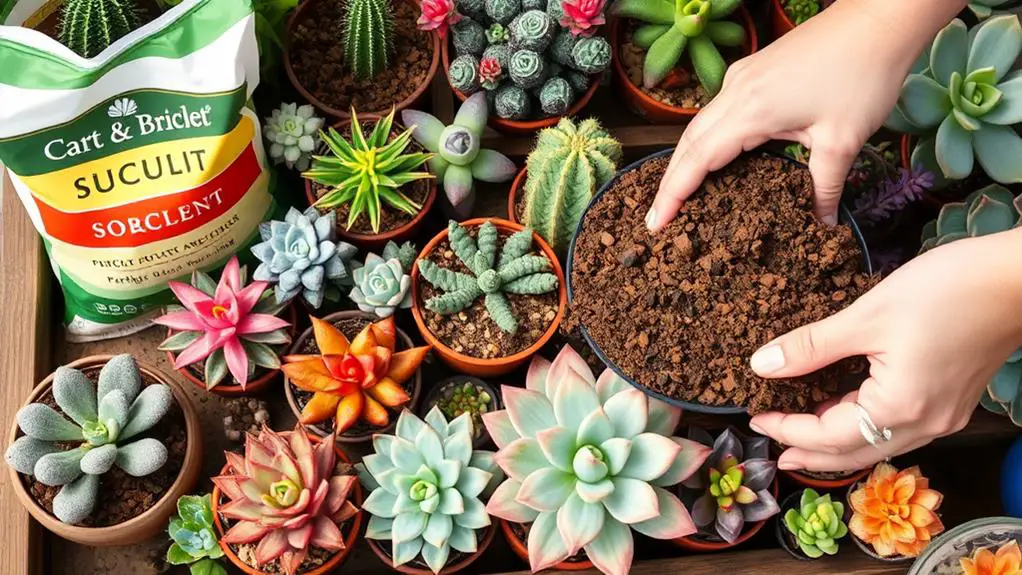
Commercial soil options offer a convenient solution for succulent enthusiasts who prefer a ready-made mix tailored to their plants' needs. Brands like Bonsai Jack and Miracle-Gro provide various potting soils that can simplify your gardening efforts.
Bonsai Jack is especially popular for its excellent drainage, making it a great choice for those who tend to overwater or grow succulents indoors.
However, not all commercial soil options suit every grower. You might need to amend them with pumice or perlite to enhance drainage.
Cactus mix is known for its initial good drainage but can take longer to dry out, which is useful in conditions where moisture retention is needed.
When it comes to succulent potting, avoid peat-based mixes. They can become hydrophobic when dry, leading to water absorption problems and potential root rot.
Instead, evaluate commercial soils based on their field capacity and drying time. This way, you can find the best match for your plants' needs.
Outdoor Soil Requirements
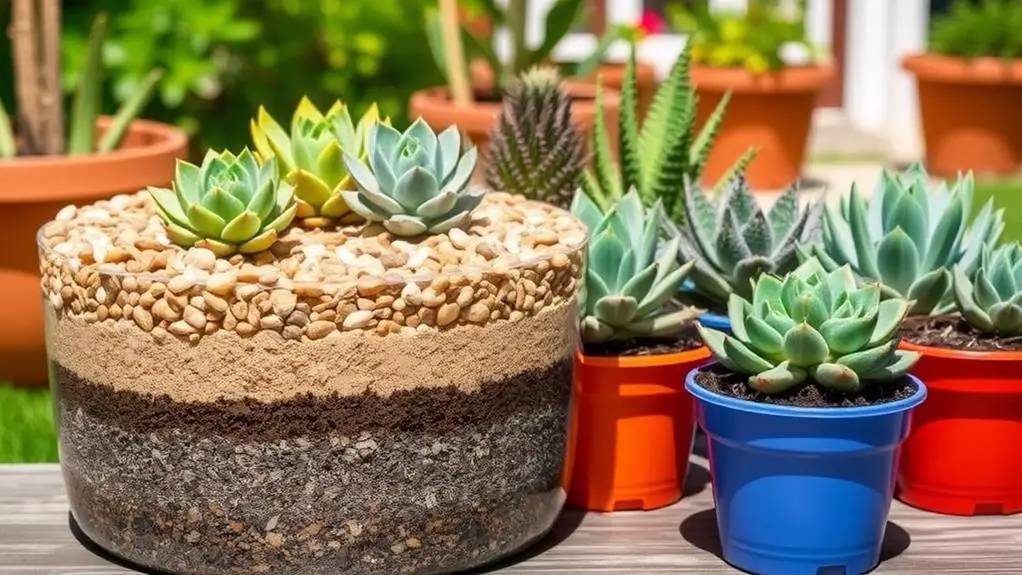
When moving from indoor to outdoor succulent gardening, adjusting your soil strategy can make all the difference. Outdoor succulents thrive best in gritty, sandy loam soil. Adding gravel mulch helps with drainage and keeps water from accumulating. This is vital to prevent root rot, which can happen if the soil stays too moist.
Heavy clay soils are a big no-no for succulents. They hold onto water, making it hard for roots to breathe. Instead, you'll want soil that lets water evaporate quickly. This helps avoid excess moisture and keeps your plants happy. Mounding soil into berms can also boost drainage and add a nice look to your garden.
Customizing soil is essential for peak growth. You can mix in materials like pumice, crushed granite, or coarse sand to improve drainage. Here's a quick guide to help you:
| Soil Type | Drainage Level |
|---|---|
| Gritty, sandy loam | High |
| Gravel mulch | Enhances drainage |
| Heavy clay | Poor |
| Pumice | High |
| Crushed granite | High |
Frequently Asked Questions
How to Make Well Drained Soil for Succulents?
Combine 3 parts traditional potting mix, 2 parts coarse sand, and 1 part perlite. Mix thoroughly in a large container. Make certain you use pots with drainage holes and store any excess soil in a sealed container.
What to Use for Drainage in Succulent Pots?
Use a mix of coarse sand, perlite, and crushed granite or pumice for drainage in succulent pots. Add a layer of decorative stones or gravel at the bottom and always choose pots with drainage holes.
What Is the Best Soil for Succulent Container Gardens?
You'll want a well-draining mix for your succulents. Combine 50%-80% coarse sand or fine gravel with potting soil or coconut coir. DIY mixes with potting mix, coarse sand, and perlite work great for ideal aeration and moisture control.
How Do You Make Well Draining Soil Containers?
To make well-draining soil containers, mix 3 parts potting mix, 2 parts coarse sand, and 1 part perlite. Guarantee containers have drainage holes. Add a gravel layer at the bottom, and mix ingredients thoroughly by hand.
Conclusion
You've got all the tips you need to create the perfect soil for your succulents. With the right mix of potting soil, coarse sand, and perlite, your plants will thrive. Don't forget to use pots with drainage holes and let the soil dry out between waterings. Whether you choose DIY or commercial options, your succulents will be happy and healthy. Happy gardening, and trust that your green thumbs have got this!

